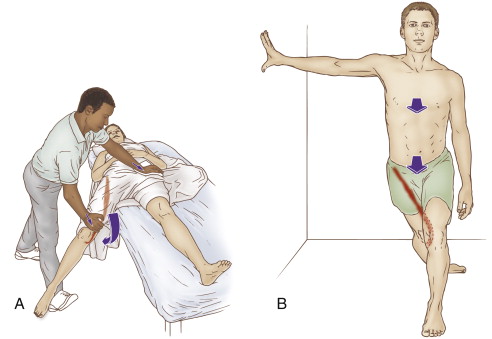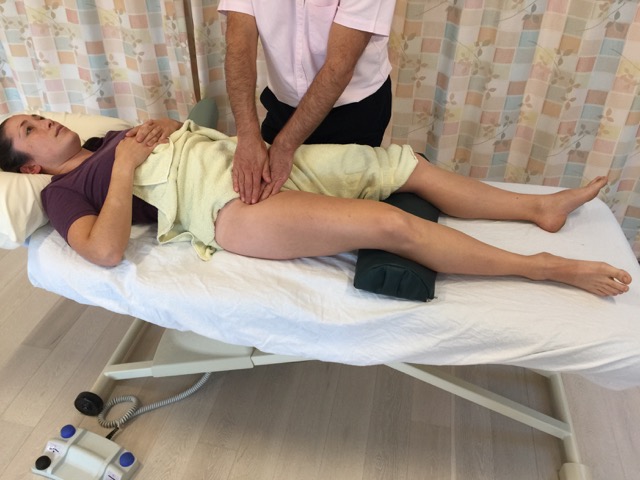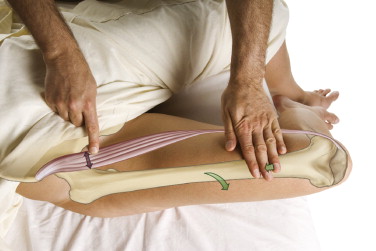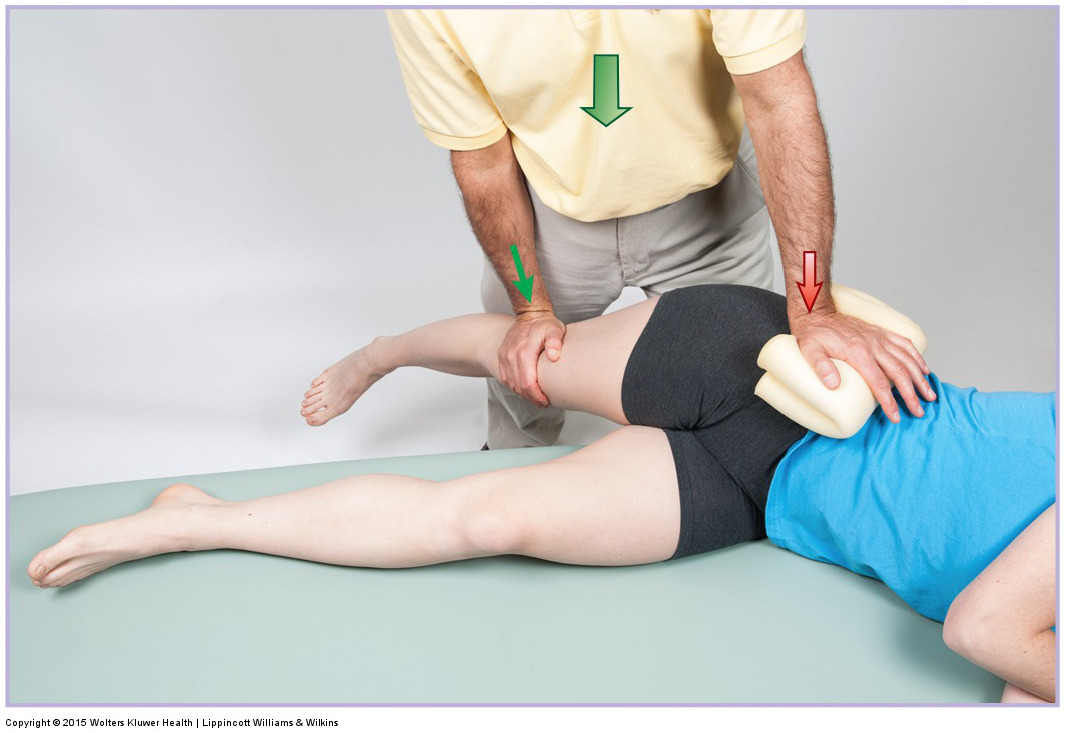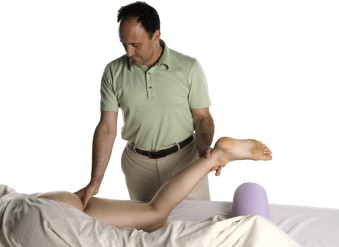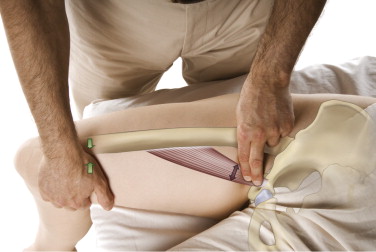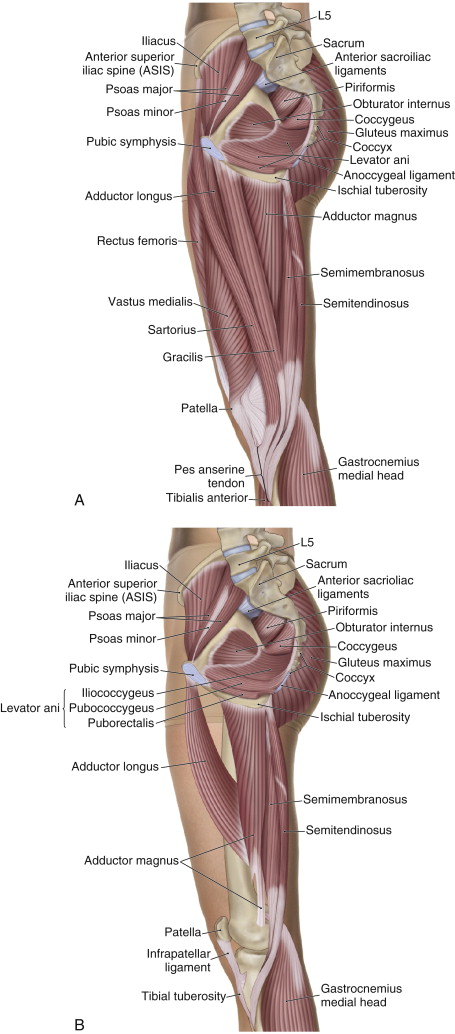Self-care for meralgia paresthetica: heat and stretching of the involved muscles, and removing the physical stress factors that contribute to the condition.
How do we treat meralgia paresthetica with manual therapy?
Manual therapy treatment for meralgia paresthetica involves massage and client counseling to remove physical stressors that contribute to the condition.
Signs, symptoms, and assessment (diagnosis) of meralgia paresthetica
Meralgia paresthetica is primarily assessed by its clinical presentation of the client/patient reporting pain or other paresthesia in the lateral thigh.
What is meralgia paresthetica and what are its causes?
Meralgia paresthetica is a condition in which the lateral femoral cutaneous nerve is compressed, causing pain or altered sensation into the lateral thigh.
Signs, symptoms, and assessment (diagnosis) of iliotibial band friction
The most common symptom of iliotibial band friction syndrome is pain in the distal lateral thigh over the lateral epicondyle of the femur.
Signs, symptoms, and assessment (diagnosis) of hamstring strain?
The most common symptom of hamstring strain is pain at the site of the strain. When acute the pain is sharp; when chronic, the pain is usually dull.
How do we assess (diagnose) a client with Adductor Strain?
During the acute phase of an adductor strain, active adduction range of motion and manual resistance to adduction will increase the client/patient’s pain.
Tight adductor? Symptoms and signs to consider for groin pulls
The most common tight adductor symptom – also known as a groin pull – is pain in the medial thigh at the site of the strain.

